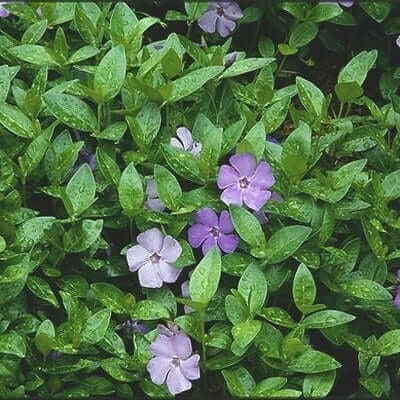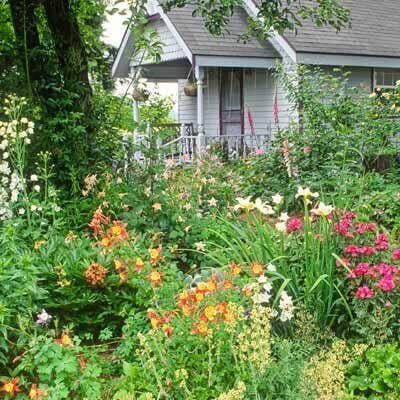10 Hardy Perennials: Disease-Resistant Garden Favorites
Creating a vibrant and healthy garden involves selecting plants that exhibit visual appeal and are resilient to various challenges, including diseases.
Hardy perennials are a go-to choice for many garden enthusiasts due to their ability to withstand harsh conditions while maintaining their beauty year after year. This article will explore ten exceptional disease-resistant hardy perennials that can be cherished in gardens of all sizes and styles.
Coneflower (Echinacea spp.) Coneflowers are renowned for their stunning daisy-like blooms and adaptability to diverse climates. They possess natural compounds that make them more resistant to diseases, like powdery mildew and aster yellows.
Varieties like Echinacea purpurea and Echinacea angustifolia offer an array of colors, from traditional purple to vibrant oranges and pinks.
A staple in many gardens, black-eyed Susans are not only visually appealing with their golden-yellow petals and dark centers but are also highly disease-resistant. They are less prone to common pests and can thrive in various soil types. Rudbeckia fulgida 'Goldsturm' is a popular cultivar known for its reliability and longevity.
Russian Sage (Perovskia atriplicifolia) Russian sage is a woody perennial cherished for its aromatic foliage and spiky, lavender-blue flowers. This drought-tolerant and disease-resistant plant makes it an excellent choice for low-maintenance gardens. Its airy appearance adds a touch of elegance to any landscape.
Daylilies come in various colors and are famous for their adaptability and disease resistance. These perennials can thrive in varied soil conditions and are known for their resistance to rust and other common diseases. Their vibrant, trumpet-shaped blooms add color to gardens throughout the growing season.
Sedum (Sedum spp.) Sedums, also known as stonecrops, are succulent perennials celebrated for their ability to thrive in challenging conditions, including poor soil and drought. Their fleshy leaves and clusters of star-shaped flowers look delightful, and due to their unique structure, they are less susceptible to diseases.
Lavender (Lavandula spp.) Lavender's aromatic foliage and soothing blooms have made it a garden favorite for centuries. Its natural oils deter many pests, making it a disease-resistant option.
Varieties like English lavender (Lavandula angustifolia) and French lavender (Lavandula stoechas) bring beauty and resilience to gardens. Yarrow (Achillea spp.) Yarrow is a hardy perennial known for its feathery foliage and flattened flower heads composed of tiny blossoms. It resists several common diseases and attracts beneficial insects like pollinators and predators. Achillea millefolium 'Paprika' adds a pop of red to the garden.
Astilbe (Astilbe spp.) Astilbe's plume-like flowers bring a unique texture to shaded garden beds. These plants naturally resist many pests and diseases while thriving in moisture-retentive soils. Their elegant, fern-like foliage enhances the overall appeal of the garden.
Coreopsis (Coreopsis spp.) Coreopsis, commonly known as tickseed, offers cheerful, daisy-like flowers in various shades of yellow and red. Their vibrant blooms are complemented by disease-resistant qualities, making them a reliable garden choice. Coreopsis verticillata is a well-loved species that can tolerate challenging conditions.
Catmint (Nepeta spp.) Catmint is loved by cats and gardeners seeking a challenging, disease-resistant perennial. Its aromatic foliage and spikes of blue-to-lavender flowers add a serene charm to any garden. Nepeta x faassenii is a popular variety known for its long bloom period and low maintenance needs.
Selecting Disease-Resistant Perennials Can Contribute To The Success Of Your Outdoor Space
The ten hardy perennials discussed above—including coneflowers, black-eyed Susans, Russian sage, daylilies, sedums, lavender, yarrow, astilbe, coreopsis, and catmint—showcase a diverse range of colors, forms, and textures while standing up to common garden diseases. Incorporating these resilient plants into your garden ensures a visually captivating landscape and reduces the need for excessive chemical interventions.
Remember, a well-chosen ensemble of disease-resistant perennials can be the cornerstone of a vibrant and enduring garden for years. Selecting the right location is crucial. Assess the amount of sunlight the area receives throughout the day. Most flowering plants require at least six hours of direct sunlight, while some shade-loving varieties thrive in filtered light. Adequate drainage is equally important, as waterlogged soil can lead to root rot.
Soil preparation is the foundation of a successful garden. Testing the soil's pH and nutrient levels helps determine the necessary amendments. Incorporating compost enriches the soil with essential nutrients and improves its structure, allowing for better water retention and root development.
Mulching the surface conserves moisture, prevents weed growth, and regulates soil temperature. Choosing native or adapted plants is a sustainable approach. Native plants naturally acclimate to the local environment, requiring less water and maintenance once established.
Diversity is critical—select various plants that bloom at different times, ensuring year-round interest and providing a continuous food source for pollinators. Regular watering is crucial, especially during the initial establishment phase. Deep, infrequent watering encourages plants to develop deep root systems, making them more resilient to drought conditions.
Consider using a drip irrigation system to minimize water wastage and keep foliage dry, reducing the risk of fungal diseases. Vigilant pest and disease management is essential to maintaining a healthy garden. Encourage natural predators like ladybugs and birds, which help control pests organically. Pruning dead or diseased branches improves the plant's appearance and prevents the spread of issues.
Nutrition plays a pivotal role in plant health. Fertilize plants according to their needs and growth phases. Avoid over-fertilization; organic fertilizers release nutrients slowly, promoting steady, sustained growth. Finally, a well-maintained garden is a clean garden. Remove weeds regularly. It reduces hiding places for pests.
Cleaning Tools After Use Can Help To Prevent The Spread Of Diseases
In conclusion, creating a vibrant and healthy garden requires a thoughtful approach that integrates various elements.
From proper site selection and soil preparation to mindful plant choices and diligent maintenance, every step contributes to the overall vitality of the garden. The result is a visually pleasing landscape and a thriving ecosystem that brings joy to the gardener and supports the local wildlife
Crafting a DIY Bed for Disease-Resistant Plants
Constructing your garden bed with disease-resistant plants enhances productivity while reducing stress throughout your gardening process. The likelihood of common plant pathogens taking hold decreases when you integrate thoughtful design with proper site preparation and appropriate plant selections. Your garden requires less maintenance and delivers more beauty or harvest due to its healthier state, which needs fewer interventions. This step-by-step guide to building your gardening bed will help you understand how to design your garden layout and care for your crops throughout the growing season.
1. Understand the Value of Disease-Resistant Plants
Gardeners can maintain extensive gardens sustainably by choosing to plant varieties that resist diseases. The natural resistance of these plant varieties to mildews, blights, and wilts reduces the need for chemical treatments and extensive maintenance. Combining disease-resistant plant varieties with intelligent garden bed design creates conditions that promote vigorous plant growth.
Despite their resistance traits, disease-resistant plants are not immune to all threats. Crops continue to face risks from extreme weather patterns and inadequate soil drainage systems. Choosing disease-resistant plant species or varieties improves your chances of success by enhancing plant health and boosting edible crop yields.
2. Pick the Perfect Location
The first step in building a practical garden bed is selecting the right site. Even the hardiest pathogen-resistant plants will fail if they experience unsuitable growing conditions.
Sunlight: Popular vegetables and ornamental disease-resistant cultivars require at least six hours of daylight. When leaves receive enough sunlight, moisture evaporates more quickly, which helps prevent fungal infections.
Air Circulation: Maintaining proper air circulation around plants is crucial in lowering the risk of disease outbreaks. Select a spacious area for your garden bed instead of placing it in a tight corner or beside tall buildings that stop airflow.
Drainage: Pathogens often flourish in consistently wet soil. Avoid planting in low areas where water collects following rainfall. For yards without natural drainage capacity, build a raised bed using soil that permits good drainage.
3. Constructing the Bed
The fundamental principles for building a disease-resistant planting area remain constant whether you choose an in-ground or a raised bed.
Raised vs. In-Ground: Raised beds enable gardeners to manage soil composition more precisely, decreasing the risk of soilborne pathogens. They also elevate crops above standing water. Gardeners who have experienced plant diseases in their yards tend to manage raised beds better, although in-ground beds perform well when native soil is healthy with free drainage.
Materials:
Wood: Gardeners commonly choose untreated rot-resistant wood types like cedar or redwood for their natural durability. They avoid pressure-treated wood, which might leach chemicals.
Composite or Recycled Plastic Boards: Composite or recycled plastic boards endure weather elements and maintain their quality over time, but they may increase your budget.
Stone or Brick: These materials offer permanent solutions but typically have higher weight and cost.
Select whatever material you like, but ensure your bed stands 8–12 inches tall to provide roots enough room to grow and maintain proper soil depth.
Size and Layout: Create a garden bed that is wide enough for multiple plant species so you can tend the entire area. However, be careful not to make the bed so large that soil compaction occurs when reaching the center. Most gardeners find beds between 3 and 4 feet wide convenient because they can access all plants from either side without stepping on the soil.
4. Prepare the Soil
Soil health is integral to disease prevention. Crops develop stronger infection resistance when they grow vigorously in a soil mix that combines ample aeration with rich nutrients.
Soil Mix:
For Raised Beds: To prepare the soil for raised beds, blend 50% topsoil with 30% compost or well-rotted manure and 20% coarse materials, including perlite or coarse sand, to enhance drainage.
For In-Ground Beds: Aerate the first 8–12 inches (20–30 cm) of native soil and clear away all rocks and debris. Apply plenty of compost to enhance soil structure and fertility.
pH Adjustments: Test your soil using a home kit or by sending a sample to your local extension office. Most disease-resistant vegetables or ornamental plants thrive within a pH level between 6.0 and 7.0, but some plant families may require slightly different pH levels. Adjusting soil pH to the proper level when necessary enables better nutrient absorption, which strengthens plant defenses against disease.
Mulch and Organic Matter: Organic mulch like straw, shredded leaves, or wood chips spread across the bed helps protect leaves from pathogen splashing during rain or watering. Mulch moderates soil temperatures and retains moisture, which helps reduce plant stress, which is crucial in determining disease susceptibility.
5. Selecting Disease-Resistant Varieties
Selecting disease-resistant cultivars is essential to your disease-prevention strategy by focusing on varieties bred for resilience.
Seed Packet Information: Disease resistance details appear marked on many seed packets and plant labels, which sometimes use abbreviations. The abbreviation "VFN" on tomato seed packets signifies plant resistance to Verticillium wilt, Fusarium wilt, and nematodes.
Regional Recommendations: Contact nearby nurseries, agricultural extension services, and fellow gardeners with regional expertise. These individuals provide dependable knowledge about which plant varieties demonstrate the best defense against common regional pathogens.
Diversity: Growing various species or cultivars prevents the development of a monoculture, which tends to attract diseases. Beneficial insects and fungi thrive when a planting scheme includes diverse plant species.
6. Spacing and Planting
When plants are crowded, airflow becomes restricted, and humidity builds up in their immediate environment, creating conditions ideal for pathogen development. Use recommended spacing instructions from seed packets or plant labels and provide additional space when you have doubts.
Row Orientation: Arrange rows parallel with prevailing winds whenever possible to allow airflow that helps remove moisture from leaves.
Interplanting: Combine disease-resistant plants with beneficial companions. Certain herbs and flowers repel pests, reducing stress levels for agricultural plants.
Proper Depth: Follow planting instructions to place seeds or transplants at their recommended depth. Plants planted too profoundly are more likely to develop rot and stem diseases.
7. Maintenance and Monitoring
Even though cultivars need ongoing care:
Watering Strategy: Apply water to the soil surface to prevent leaf moisture, reducing the risk of fungal infections. Drip irrigation or soaker hoses are ideal. Infrequent deep watering permits the topsoil to dry between sessions.
Fertilization: Excessive nitrogen fertilization leads to lush but weak plant growth, which makes it more susceptible to disease. Most plants thrive well using slow-release balanced fertilizers and periodic compost tea applications.
Sanitation: Remove diseased or dead plant material promptly. Pull weeds from your garden to prevent them from becoming a source or carrier of diseases.
Crop Rotation: Plant rotation among different families reduces disease cycles when the same garden bed is used for several years.
8. Harvest and Enjoy
The production of flowers, fruits, or foliage in your plants will demonstrate the worth of your efforts to establish a disease-resistant garden bed. Healthier plants require less maintenance, enabling you to concentrate on picking produce or enjoying their lush development. Remove old plant debris after each growing season for proper hygiene maintenance.
Integrating sturdy DIY beds with carefully chosen cultivars and advanced gardening practices creates a robust environment where disease-resistant plants thrive. Every gardening decision, from site selection to cleanup after harvest, creates a garden with minimal risks and maximal benefits. Gradually, you will determine which plant varieties perform best in your specific conditions as you refine your gardening methods and explore new plant types. Your garden becomes a vibrant and productive area that gives you exquisite flowers alongside plentiful yields while delivering the pleasure of watching your healthy garden prosper.
Read more

Are you a nature enthusiast looking for a new plant to add to your collection? If so, consider the beautiful and diverse world of New York ferns. New York ferns are a group of species native to the...

What, in your opinion, enhances the beauty of a garden? Your garden may gain a new level of excitement when bees, birds, and butterflies appear. Planting flowers with these elements in mind will dr...


